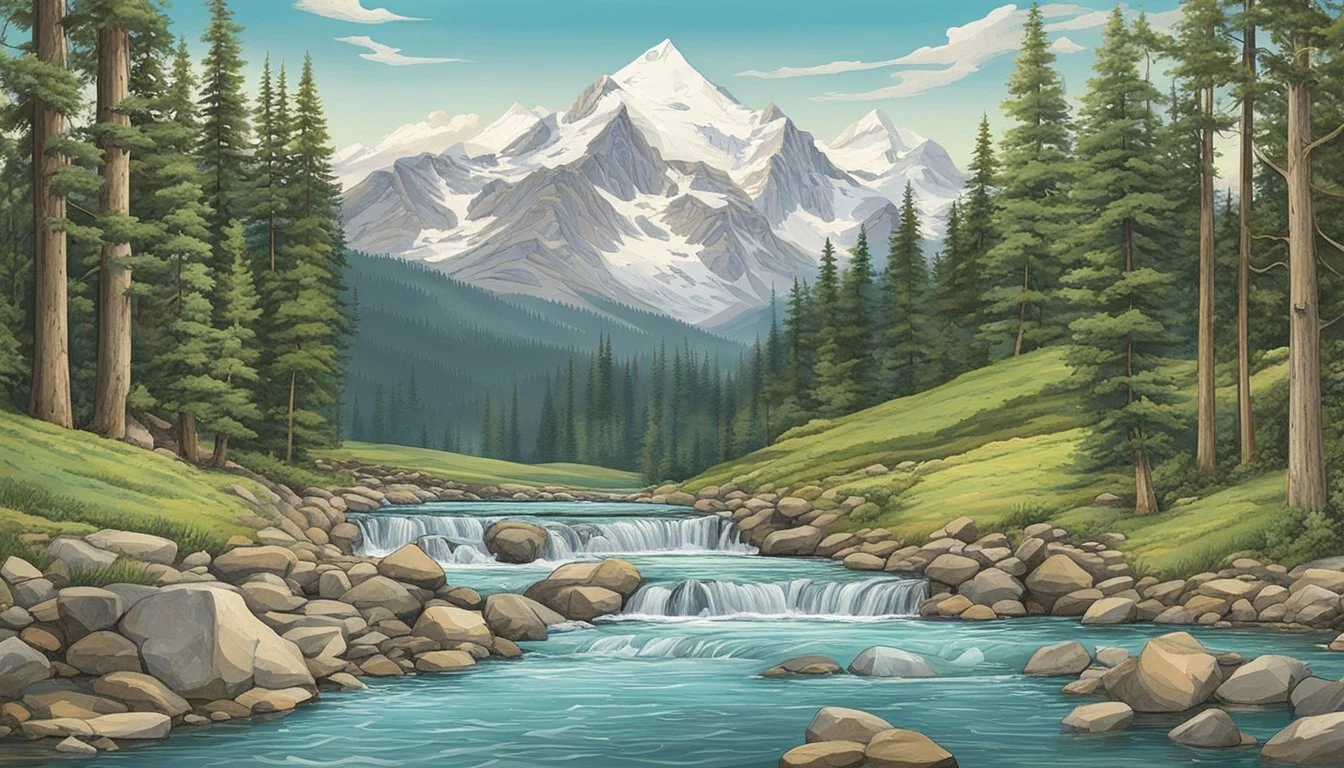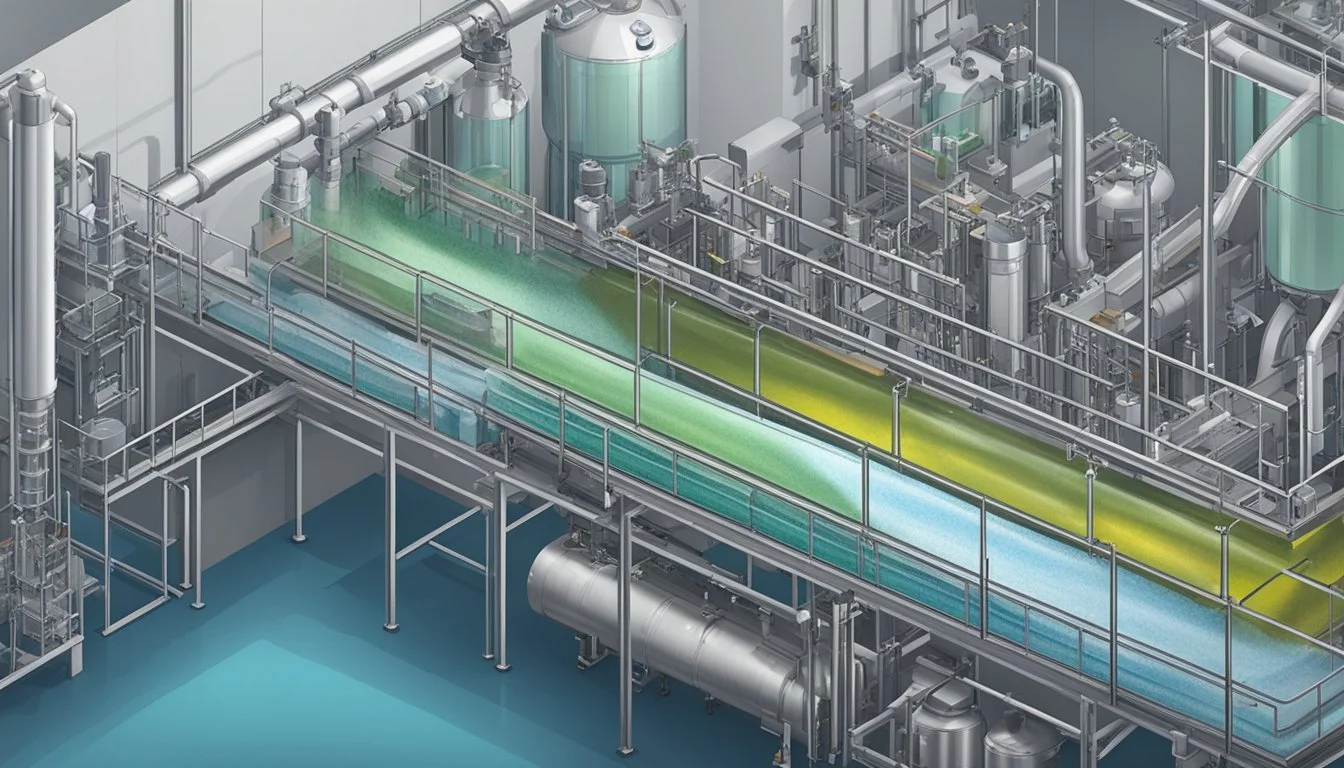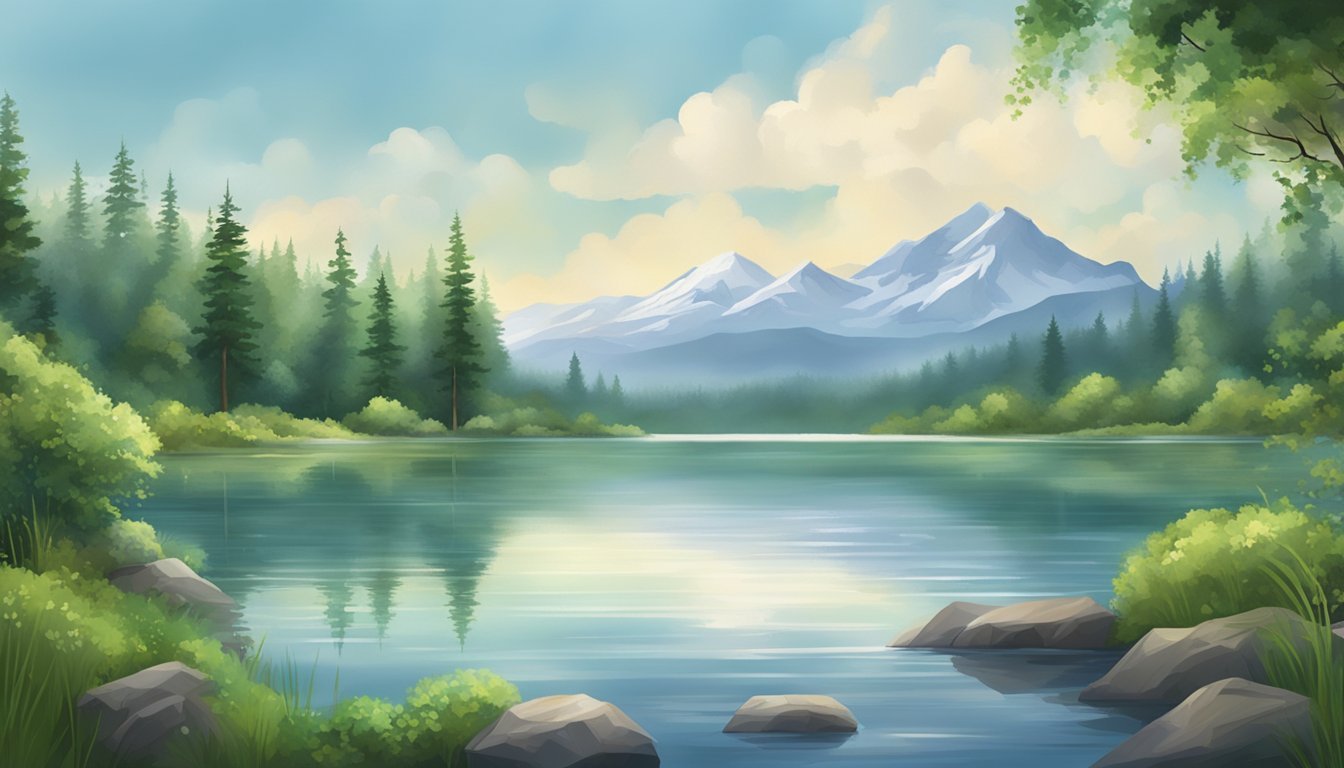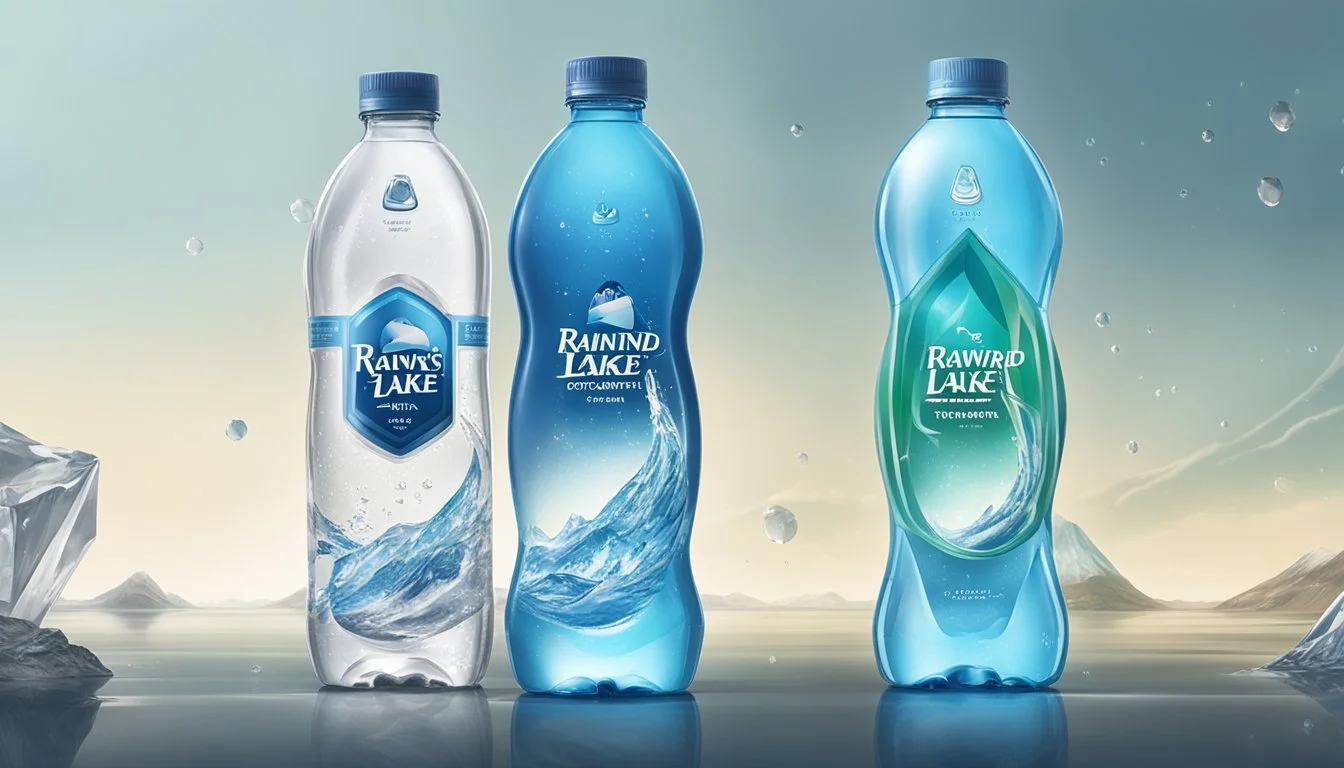Richard’s Rainwater vs. Crystal Lake
Which is the Superior Bottled Water?
When it comes to choosing the best bottled water, consumers often find themselves comparing brands like Richard’s Rainwater and Crystal Lake. Richard’s Rainwater claims a unique approach by collecting rainwater and filtering it through a zero-waste system, making more water available than conventional sources. On the other hand, Crystal Lake positions itself as a reliable and accessible choice for high-quality drinking water.
Richard’s Rainwater stands out due to its innovative and eco-friendly method, providing a net-positive impact on water availability. Crystal Lake offers consistent quality and is widely available, making it a staple for many households. Both brands cater to the premium bottled water market but with different strengths, influencing consumer choices.
Each brand has its loyal following based on distinct attributes such as taste, environmental impact, and accessibility. The competition between Richard’s Rainwater and Crystal Lake illustrates the diverse preferences in the bottled water industry. Consumers looking to make informed decisions will benefit from understanding what each brand uniquely offers.
Understanding Bottled Water
Bottled water is consumed worldwide for its convenience and perceived purity. The subsections below explore the different types of bottled water, their packaging materials, and global consumption trends.
Types of Bottled Water
Bottled water comes in various forms, each with unique characteristics. Spring water is sourced from natural springs and typically goes through minimal processing to retain minerals. Purified water is treated through processes such as reverse osmosis, distillation, or deionization, removing impurities and minerals. Mineral water contains minerals and trace elements, naturally sourced or added. Finally, rainwater is collected from the atmosphere, as seen with products like Richard’s Rainwater, ensuring purity before bottling.
Packaging Materials and Impact
Packaging plays a crucial role in the bottled water industry. Plastic bottles are lightweight and cost-effective but pose significant environmental concerns due to their non-biodegradable nature. Efforts to improve recycling rates and develop biodegradable plastics are ongoing. Glass bottles, while heavier and more expensive to transport, are reusable and recyclable, making them a more sustainable choice. Companies are increasingly exploring innovative materials and methods to reduce the environmental footprint of their packaging.
Global Consumption Trends
The global consumption of bottled water has seen steady growth in recent years. Increased awareness of the health benefits of staying hydrated has driven this upward trend. Regions with limited access to clean tap water, such as parts of Africa and Asia, show particularly high demand. Meanwhile, consumers in North America and Europe are increasingly seeking products with sustainable packaging. High-growth brands like Richard’s Rainwater tap into these trends by offering eco-friendly options and emphasizing their positive environmental impact.
Origin and Source Comparison
Understanding the origins and sources of bottled water is crucial for consumers. Richard's Rainwater and Crystal Lake offer unique methods of sourcing their water, highlighting different aspects of sustainability and natural purity.
Richard’s Rainwater Source
Richard’s Rainwater utilizes collected rainwater as its primary source. The company gathers rainwater from multiple locations in the United States, ensuring a consistent and sustainable supply.
Once collected, the rainwater undergoes a purification process to make it 100% potable. This rainwater-centric approach emphasizes sustainability by using a renewable source and reducing dependence on traditional groundwater.
In 2022, Richard’s Rainwater collected approximately 4 million gallons of rainwater. The collected rainwater is then packaged in bottles and cans, maintaining the natural purity while ensuring safety for consumption. This innovative approach underscores the company’s commitment to environmental stewardship and high-quality water.
Crystal Lake's Water Origin
Crystal Lake sources its water predominantly from natural springs. These springs are carefully selected for their purity and mineral content, contributing to the water's clean and refreshing taste. The process of sourcing spring water ensures it remains free from contaminants typically found in other water sources.
Natural filtration through layers of earth and rock endows the water with essential minerals, enhancing its taste and nutritional value. Crystal Lake places a strong emphasis on maintaining the integrity of the springs they utilize, ensuring that the surrounding ecosystems remain unaffected.
By prioritizing natural springs, Crystal Lake offers consumers water that is naturally filtered and rich in quality, making it a trusted choice for those seeking pure and refreshing hydration.
Collection and Filtration Processes
This section explores the distinctions between Richard’s Rainwater and Crystal Lake in terms of their collection sources and purification methods. It highlights collecting rainwater, natural springs, and sophisticated filtration techniques.
Rainwater Harvesting Techniques
Richard's Rainwater focuses on sustainable practices by collecting rainwater using advanced harvesting systems. These systems capture and store rainwater in large tanks. This technique not only conserves traditional water sources but also reduces the carbon footprint associated with bottled water production.
Rainwater is naturally soft and free from contaminants such as chlorine and fluoride, making it ideal for bottling after minimal processing. The collected rainwater undergoes rigorous purification processes to ensure it is potable. Filtration stages include sediment removal and ultraviolet (UV) light treatment, which effectively eliminate microorganisms and impurities, maintaining its natural purity.
Natural Springs and Groundwater Extraction
Crystal Lake sources its water from protected natural springs in the United States. These springs are meticulously maintained to ensure a consistent supply of high-quality water. Groundwater extraction methods involve drawing water directly from subterranean aquifers.
The natural spring water is rich in minerals, which often contribute to its taste and health benefits. To ensure sustainability, Crystal Lake monitors extraction rates closely to prevent depletion and maintains the ecological balance of the spring areas. This method also generally avoids surface contaminants, providing a naturally clean starting point for further water treatment.
Water Treatment and Purity
Richard's Rainwater employs purification techniques such as ultraviolet (UV) light treatment, which destroys pathogens without adding chemicals. The absence of additional chemicals like chlorine and fluoride ensures the rainwater's taste remains pure and natural. This process also aligns with sustainable practices since it uses less energy compared to traditional methods.
Crystal Lake, on the other hand, enhances its spring water using a robust filtration process. This often includes multiple stages like carbon filtration, and sometimes reverse osmosis, to remove any residual impurities. The method also ensures a balanced mineral profile, making the water suitable for regular consumption while maintaining its essential mineral content. Both brands prioritize purity but achieve it through distinct and effective methods.
Health and Quality Assessments
This section explores the taste profile, mineral content, and health impact of Richard’s Rainwater and Crystal Lake.
Taste Profile and Flavor Notes
Richard’s Rainwater offers a unique taste often associated with its rain-sourced origins. It has a fresh, clean sensation that appeals to those seeking a pure drinking experience.
Crystal Lake is known for a slightly tangy, mineral-rich flavor. The natural mountain spring water source contributes a distinct taste that might appeal to those who prefer a more complex water profile.
Both options offer distinct taste experiences catering to different preferences in flavor and mouthfeel.
Comparing Mineral Content
Richard’s Rainwater has a low mineral content due to the nature of its collection and purification process. This makes it a good option for individuals seeking pure, clean drinking water with minimal alterations.
Crystal Lake, drawing from mountain springs, typically contains a higher mineral content. This includes beneficial minerals like calcium and magnesium, contributing to its slightly tangy taste.
The differences in mineral content can impact not only taste but also nutritional intake from each water brand.
Impact of Water on Health
The purity of Richard’s Rainwater, free from contaminants like lead and ammonia, ensures it is safe and potable. This aspect is critical for those concerned with ingesting the cleanest possible water.
Crystal Lake's higher mineral content offers health benefits relating to essential minerals. However, it’s crucial to verify the absence of harmful contaminants even in spring water.
In terms of health, both brands provide significant benefits but cater to slightly different needs, focusing on purity versus mineral content.
Environmental Impact
Richard's Rainwater and Crystal Lake both strive to minimize their environmental footprint, but their methods and effectiveness vary. Examining their use of renewable water sources, packaging initiatives, and ecological footprint highlights key differences in their sustainability efforts.
Water as a Renewable Resource
Richard's Rainwater harnesses the power of nature by capturing rainwater before it reaches the ground, ensuring a pure and sustainable supply. By utilizing clouds, Richard's Rainwater taps into an endlessly renewable water source, reducing dependency on groundwater and other sources.
Crystal Lake sources water from natural springs, often leading to over-extraction concerns. While they also ensure high water quality, the reliance on spring water can strain local ecosystems. Richard's Rainwater's method is inherently more sustainable, minimizing the impact on the environment.
Packaging and Recycling Initiatives
Richard's Rainwater packages its still and sparkling beverages in 16 oz. aluminum cans and 750ml glass bottles, promoting recycling and reducing plastic usage. Aluminum and glass are highly recyclable materials, contributing to the reduction of waste and promoting a circular economy.
Crystal Lake, on the other hand, often uses plastic bottles, which have a higher environmental impact due to lower recycling rates and longer decomposition times. Despite efforts to improve recycling practices, plastic remains a significant challenge. Richard's Rainwater's commitment to environmentally friendly packaging gives it a notable advantage in sustainability.
Local vs. Global Ecological Footprint
Richard's Rainwater’s process of capturing rain locally prevents urban storm runoff, thereby benefiting local ecosystems and reducing pollution. By sourcing locally and focusing on nearby markets, Richard's Rainwater achieves a lower carbon footprint related to transportation.
Crystal Lake, being a premium brand sourced from specific natural springs, often entails longer transportation distances, increasing its carbon footprint. While both brands aim to minimize their environmental impact, Richard's Rainwater demonstrates a net-positive approach through its local sourcing and reduced transportation emissions.
In summarizing the environmental impacts, it is evident that Richard's Rainwater emphasizes renewable resources and sustainable practices, while Crystal Lake focuses on maintaining high-quality spring water amidst greater ecological challenges.
Brand Histories and Ethos
Richard’s Rainwater and Crystal Lake are two bottled water brands with unique histories and values. The following sections delve into their origins, core values, and their impact on the market.
Richard's Rainwater: From Local to National
Richard Heinichen founded Richard’s Rainwater in Austin, Texas. His vision was clear: harness local rainwater using proprietary technology to ensure purity.
Starting locally, the brand expanded nationally, maintaining a commitment to sustainable practices. Richard’s Rainwater emphasizes eco-friendly methods, using recyclable materials and green energy. Their collection and filtration systems are cutting-edge, ensuring that the water is not just pure but also sustainably sourced.
The company’s technical prowess in rainwater harvesting sets them apart, making them a leader in innovation within the industry.
Crystal Lake: Tradition and Purity
Crystal Lake touts a long-standing tradition of purity. Originating from pristine mountain springs, the water is marketed as naturally sourced and minimally processed.
Their brand ethos revolves around simplicity and maintaining natural quality. Crystal Lake places strong emphasis on the origins of their water sources, often highlighting the untouched landscapes from which the water is drawn.
With a focus on purity, they avoid the use of additives or preservatives. The company's dedication to tradition and purity has garnered a loyal consumer base who appreciate the straightforward, clean quality of their water.
Market Presence and Consumer Reach
Richard’s Rainwater has gained significant traction in both retail and online markets, while Crystal Lake has its own established channels and consumer base. Here's how each brand measures up in terms of retail distribution and their online brand footprint.
Retail Distribution Channels
Richard's Rainwater is prominently featured in major grocery stores such as Kroger, Whole Foods, and Albertsons. These retailers provide a substantial platform for reaching health-conscious shoppers who prefer eco-friendly products.
Sales for Richard's Rainwater surged from $100,000 in 2017 to over $10 million in 2023. This growth underscores the effectiveness of their retail strategy and increasing consumer demand.
Crystal Lake, on the other hand, has a steady presence in regional markets. It leverages partnerships with local grocery chains and boutique stores. Although less expansive than Richard’s Rainwater, Crystal Lake has loyal customers who appreciate its traditional spring water.
Online Brand Footprint
Richard’s Rainwater has a robust online presence. Their digital campaigns extensively utilize Instagram and LinkedIn, engaging consumers with sustainability messages and behind-the-scenes content. This has broadened their consumer reach, particularly among younger, eco-conscious demographics.
Their e-commerce platform directly supports their sales, offering an easy purchase experience with home delivery options. This digital strategy is backed by growing social media followings and consistent engagement.
Crystal Lake's online activities are more subdued but effective within their scope. They focus on direct-to-consumer sales through their website and occasional marketing efforts on social media. Their approach is more targeted, catering to an existing customer base rather than aggressively seeking new markets.
Product Variants and Offerings
Richard’s Rainwater and Crystal Lake bottled water brands offer diverse product lines and packaging choices. This section will examine the differences in their still and sparkling water offerings and the variety of packaging options they provide.
Still vs. Sparkling: Product Lines
Richard’s Rainwater focuses on providing premium rainwater bottled at the source to maintain its purity. They offer both still and sparkling water variants. The still water is known for its smooth and clean taste, derived from their meticulous filtration system.
Crystal Lake is a traditional player in the bottled water market, with a strong emphasis on natural mineral water. Like Richard’s Rainwater, they offer both still and sparkling options. Their still water emphasizes the natural minerals sourced from underground aquifers, giving it a distinct taste. Crystal Lake’s sparkling water comes in multiple flavor variants, catering to a broader audience.
Packaging Choices: Bottles and Cans
Richard’s Rainwater packages their water primarily in infinitely recyclable cans, supporting their sustainability mission. They use both aluminum cans and glass bottles, aiming to reduce plastic usage. The brand emphasizes eco-friendly packaging to align with their net-positive water initiative.
Crystal Lake provides more traditional packaging options, including plastic bottles, glass bottles, and aluminum cans. Their product line offers various sizes to cater to different consumer needs. Crystal Lake's use of plastic bottles is notable for convenience store availability, making their products widely accessible but less environmentally driven compared to Richard's Rainwater. The inclusion of aluminum cans offers an alternative for those seeking more eco-friendly options.
Future Trends in Bottled Water
Innovation in sustainable sources and changing consumer preferences are driving significant shifts in the bottled water industry. These trends shape both the origin of the water and the drinking water system it employs.
Sustainable Sources and Technologies
Increasing concern for the environment has led to a notable shift towards sustainable technology in bottled water production. Companies are now focusing on renewable water sources such as rainwater, similar to Richard’s Rainwater, which collects and purifies rain to create a potable product. This method ensures a minimized environmental footprint.
Advanced filtration systems and eco-friendly packaging also play a crucial role. Many brands now employ recyclable materials like aluminum and glass to reduce plastic waste. Innovations in hyper-efficient purification processes help ensure that water quality remains high while the ecological impact is minimized.
Changing Consumer Preferences
Modern consumers are more informed and conscientious about their purchases. There is a marked shift towards transparency in the bottled water industry, with customers demanding information about the water's path from origin to bottle. This includes a growing interest in products that prioritize quality, sustainability, and ethical practices.
Products like Richard’s Rainwater meet these demands by sourcing their water from natural phenomena and utilizing sustainable methods. Affordability and health benefits also remain key drivers. As a result, brands investing in eco-conscious and health-focused innovations are set to resonate more deeply with future consumers.
More About Richard’s Rainwater
Acqua Pana vs Richard's Rainwater: Which Bottled Water is Better?
Alkaline88 vs Richard's Rainwater: Which Bottled Water is Better?
Antipodes vs Richard's Rainwater: Which Bottled Water is Better?
Aqua Carpatica vs Richard's Rainwater: Which Bottled Water is Better?
Aquafina vs Richard's Rainwater: Which Bottled Water is Better?
Arrowhead vs Richard's Rainwater: Which Bottled Water is Better?
Boxed Water vs Richard's Rainwater: Which Bottled Water is Better?
Cascade Mountain vs Richard's Rainwater: Which Bottled Water is Better?
Castle Rock vs Richard's Rainwater: Which Bottled Water is Better?
Cirro vs Richard's Rainwater: Which Bottled Water is Better?
Core Hydration vs Richard's Rainwater: Which Bottled Water is Better?
Crystal Geyser vs Richard's Rainwater: Which Bottled Water is Better?
Deer Park vs Richard's Rainwater: Which Bottled Water is Better?
Erewhon vs Richard's Rainwater: Which Bottled Water is Better?
Essentia vs Richard's Rainwater: Which Bottled Water is Better?
Eternal vs Richard's Rainwater: Which Bottled Water is Better?
Ethos vs Richard's Rainwater: Which Bottled Water is Better?
Evian vs Richard's Rainwater: Which Bottled Water is Better?
Hawaii Volcanic vs Richard's Rainwater: Which Bottled Water is Better?
Hawaiian Springs vs Richard's Rainwater: Which Bottled Water is Better?
Ice Mountain vs Richard's Rainwater: Which Bottled Water is Better?
Icelandic Glacial vs Richard's Rainwater: Which Bottled Water is Better?
Just Water vs Richard's Rainwater: Which Bottled Water is Better?
Kroger vs Richard's Rainwater: Which Bottled Water is Better?
LIFEWTR vs Richard's Rainwater: Which Bottled Water is Better?
Liquid Death vs Richard's Rainwater: Which Bottled Water is Better?
Mananalu vs Richard's Rainwater: Which Bottled Water is Better?
Mountain Valley Spring Water vs Richard's Rainwater: Which Bottled Water is Better?
Nestle Pure Life vs Richard's Rainwater: Which Bottled Water is Better?
Origin vs Richard's Rainwater: Which Bottled Water is Better?
Ozarka vs Richard's Rainwater: Which Bottled Water is Better?
Penta vs Richard's Rainwater: Which Bottled Water is Better?
Perrier vs Richard's Rainwater: Which Bottled Water is Better?
Poland Spring vs Richard's Rainwater: Which Bottled Water is Better?
Purely Sedona vs Richard's Rainwater: Which Bottled Water is Better?
Richard's Rainwater vs 1907water: Which Bottled Water is Better?
Richard's Rainwater vs 7-Select: Which Bottled Water is Better?
Richard's Rainwater vs Action: Which Bottled Water is Better?
Richard's Rainwater vs Big Chill: Which Bottled Water is Better?
Richard's Rainwater vs Big Win: Which Bottled Water is Better?
Richard's Rainwater vs BodyArmor: Which Bottled Water is Better?
Richard's Rainwater vs CBD Living: Which Bottled Water is Better?
Richard's Rainwater vs Dasani: Which Bottled Water is Better?
Richard's Rainwater vs Essence pH10: Which Bottled Water is Better?
Richard's Rainwater vs HFactor: Which Bottled Water is Better?
Richard's Rainwater vs Kirkland Signature: Which Bottled Water is Better?
Richard's Rainwater vs Open Water: Which Bottled Water is Better?
Richard's Rainwater vs Ophora: Which Bottled Water is Better?
Richard's Rainwater vs Proud Source: Which Bottled Water is Better?
Richard's Rainwater vs Pure Life: Which Bottled Water is Better?
Richard's Rainwater vs Ramona: Which Bottled Water is Better?
Richard's Rainwater vs Refreshe: Which Bottled Water is Better?
Richard's Rainwater vs Simple Truth: Which Bottled Water is Better?
Richard's Rainwater vs Skyra: Which Bottled Water is Better?
Richard's Rainwater vs Talking Rain AQA: Which Bottled Water is Better?
Richard's Rainwater vs The Well: Which Bottled Water is Better?
Richard's Rainwater vs Weird Water: Which Bottled Water is Better?
Richard's Rainwater vs Whole Foods 365: Which Bottled Water is Better?
Richard's Rainwater vs Zenwtr: Which Bottled Water is Better?
San Pellegrino vs Richard's Rainwater: Which Bottled Water is Better?
Smartwater vs Richard's Rainwater: Which Bottled Water is Better?
Solan de Cabras vs Richard's Rainwater: Which Bottled Water is Better?
Starkey vs Richard's Rainwater: Which Bottled Water is Better?
Tahoe vs Richard's Rainwater: Which Bottled Water is Better?
Topo Chico vs Richard's Rainwater: Which Bottled Water is Better?
Tru Alka vs Richard's Rainwater: Which Bottled Water is Better?
Volvic vs Richard's Rainwater: Which Bottled Water is Better?
Waiakea vs Richard's Rainwater: Which Bottled Water is Better?
Whole Foods Italian Still Mineral water vs Richard's Rainwater: Which Bottled Water is Better?
Zephyrhills vs Richard's Rainwater: Which Bottled Water is Better?
More About Crystal Lake
Aqua Carpatica vs Crystal Lake: Which Bottled Water is Better?
Cascade Mountain vs Crystal Lake: Which Bottled Water is Better?
Core Hydration vs Crystal Lake: Which Bottled Water is Better?
Crystal Geyser vs Crystal Lake: Which Bottled Water is Better?
Crystal Lake vs Essence pH10: Which Bottled Water is Better?
Crystal Lake vs Proud Source: Which Bottled Water is Better?
Hawaii Volcanic vs Crystal Lake: Which Bottled Water is Better?
Hawaiian Springs vs Crystal Lake: Which Bottled Water is Better?
Ice Mountain vs Crystal Lake: Which Bottled Water is Better?
Icelandic Glacial vs Crystal Lake: Which Bottled Water is Better?
Kirkland Signature vs Crystal Lake: Which Bottled Water is Better?
Liquid Death vs Crystal Lake: Which Bottled Water is Better?
Mountain Valley Spring Water vs Crystal Lake: Which Bottled Water is Better?
Nestle Pure Life vs Crystal Lake: Which Bottled Water is Better?
Poland Spring vs Crystal Lake: Which Bottled Water is Better?
Purely Sedona vs Crystal Lake: Which Bottled Water is Better?
San Pellegrino vs Crystal Lake: Which Bottled Water is Better?
Simple Truth vs Crystal Lake: Which Bottled Water is Better?
Solan de Cabras vs Crystal Lake: Which Bottled Water is Better?
Talking Rain AQA vs Crystal Lake: Which Bottled Water is Better?
Whole Foods 365 vs Crystal Lake: Which Bottled Water is Better?
Whole Foods Italian Still Mineral water vs Crystal Lake: Which Bottled Water is Better?








